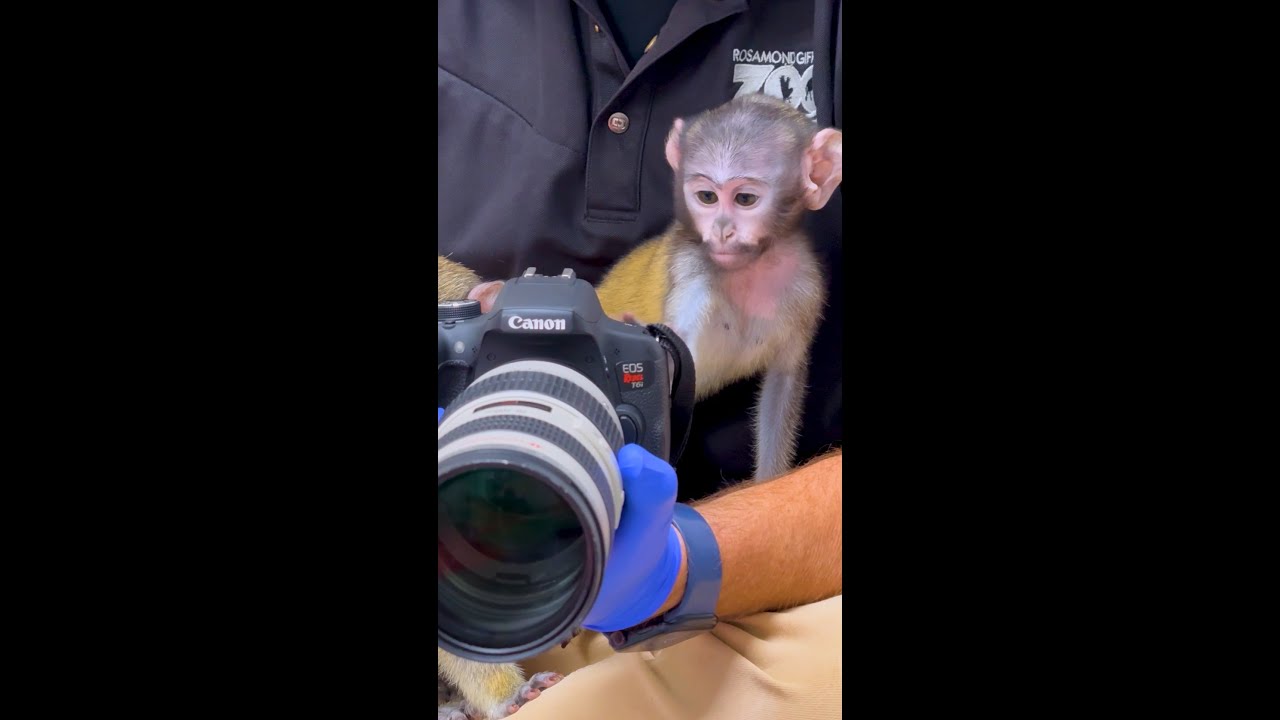- Observing Baby Monkeys React to a Camera for the First Time
- Impacts of Modern Technology on Animal Behavior
- Zoological Insights on Primate Curiosity and Playfulness
- Ethical Considerations in Wildlife Photography and Filmmaking
- Importance of Capturing and Sharing Wildlife Moments for Conservation Efforts
Observing Baby Monkeys React to a Camera for the First Time
When baby monkeys are exposed to a camera for the first time, their reactions provide both charming entertainment and valuable scientific data. These young primates, often teeming with curiosity and energy, display a barrage of behaviors ranging from hesitant curiosity to playful engagement. Modern cameras not only capture these moments in high resolution but also contribute to our understanding of primate behavior and cognition.
The initial moments of interaction are usually cautionary. Baby monkeys often approach the camera hesitantly, displaying an array of body languages indicative of their inquisitiveness and caution. As they familiarize themselves, their attention heightens and their investigative behavior kicks in. They might prod, sniff, and even circumnavigate the unfamiliar object multiple times. This phase is crucial for zoologists to study as it provides insights into the learning patterns and cognitive development of these young animals.
Impacts of Modern Technology on Animal Behavior
The introduction of cameras and other technological devices into animal habitats has both direct and indirect effects on wildlife behavior. Early encounters with technology in their environment can shape how young animals perceive and interact with novel objects. Baby monkeys, for instance, may develop quicker adaptability and reduced stress in encountering new stimuli as they grow.
Technological advancements have also facilitated the remote and often non-intrusive observation of animals. High-definition cameras and remote monitoring systems allow for the close study of animals without human presence, thereby reducing the risk of anthropogenic interference. This approach benefits both the animals, who continue their natural behavior undisturbed, and the researchers, who gather high-quality, authentic data.
Zoological Insights on Primate Curiosity and Playfulness
Primates, particularly juvenile ones, are known for their high levels of curiosity and playfulness. These traits are crucial for their survival and social development. Interaction with objects like cameras can stimulate mental activity and cognitive development in young monkeys. Play behavior in primates is not random but rather a significant aspect of their growth that facilitates learning and the honing of skills required for adulthood.
In the wild, juvenile primates engage with various environmental components—climbing trees, manipulating leaves, and interacting with peers. Introducing a camera into this mix adds a novel element that can enrich their environment and foster advanced problem-solving skills. Studying these interactions provides zoologists with critical information about the intellectual capabilities of primates and their behavioral flexibility.
Ethical Considerations in Wildlife Photography and Filmmaking
Wildlife photography and filmmaking have to tread a fine line to balance between capturing captivating images and ensuring the well-being of the subjects. The ethical considerations in this field are enormous and revolve around the principle of minimizing disturbance to wildlife. Ensuring that animals are not stressed or disrupted due to the presence of camera equipment is vital.
Photographers and filmmakers are often required to follow strict guidelines to avoid habitat destruction and unnecessary intrusion. Using remote-controlled or camouflaged cameras is one method to ensure minimal impact. Educating those involved in wildlife filming about the specific behaviors and needs of species they are documenting is essential to capturing authentic moments while adhering to ethical standards.
Importance of Capturing and Sharing Wildlife Moments for Conservation Efforts
Capturing and disseminating images of wildlife serves critical roles in conservation efforts. These visual narratives can humanize conservation issues, making them relatable and compelling to a broad audience. When baby monkeys, for example, are showcased interacting with cameras or engaging in heartwarming behaviors, they elicit empathy and awareness among viewers. Such reactions can drive public support for conservation initiatives and funding for research.
Furthermore, documenting wildlife behavior can provide invaluable data for conservationists. It helps in understanding habitat use, social structures, and interaction with human-introduced elements like cameras. With a robust database of visual records, conservation strategies can be formulated and refined to better address the needs of wildlife populations.
In summary, seeing baby monkeys react to a camera for the first time is not merely an amusing spectacle but a window into the complex interactions between wildlife and technology. By observing these behaviors, researchers gather important data on primate development and behavior, while also highlighting the ethical considerations and conservation benefits of wildlife documentation. These endeavors enrich our scientific understanding and inspire proactive conservation efforts, securing a future where humans and wildlife coexist harmoniously.
*****
Source Description
Getting our animals used to different experiences is an important part of our job! Before baby patas monkey half-sisters Sisu and Mushu could be seen by guests, we had to make sure they were used to something they were probably going to be seeing a lot of – cameras! We think they have the making of future Natural Geographic photographers. Read the full press release on our website to learn more about these precious primates: https://bit.ly/4dxSKEP
Guests may visit Sisu and Mushu daily from 10:15 to 11 a.m. and 2 to 2:45 p.m. at the Animal Health Center ICU viewing windows.
#Syracusezoo #Syracuse #CNY #PatasMonkey #Monkeys #BabyMonkeys #CuteAnimals #BabyAnimals #OnondagaCounty #OnondagaCountyParks #WeAreAZA

